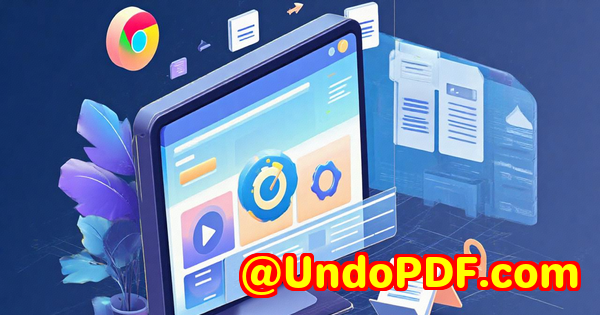How to Count Products with JavaScript Barcode Scanner in Retail Environments
Title: How to Count Products with JavaScript Barcode Scanner in Retail Environments
Meta Description: Learn how to integrate the VeryUtils JavaScript Barcode Scanner SDK to count products and boost efficiency in retail operations.

Every Monday morning, retail managers face the same challenge: manually counting products in a crowded warehouse or store. This time-consuming process often leads to mistakes, inefficiencies, and frustration.
But what if I told you there’s a way to streamline this tasksaving hours, reducing errors, and providing real-time insights? Enter the VeryUtils JavaScript Barcode Scanner SDKa fast, reliable solution for counting products and improving retail workflows.
The Challenge of Counting Products in Retail
In any retail environment, especially those with high-volume inventory, counting products can quickly become a bottleneck. Whether it’s during stock audits, order picking, or general inventory management, the traditional method of manually counting or scanning each item can lead to:
-
Human error: Miscounts can result in stock discrepancies, leading to overstocking or understocking.
-
Wasted time: Manually counting or using old scanners can slow down operations and hurt overall productivity.
-
Poor user experience: Outdated scanners or inaccurate systems frustrate employees and customers.
Retailers need an easy-to-deploy solution that can handle fast, efficient scanning, especially in hectic environments. This is where the VeryUtils JavaScript Barcode Scanner SDK comes in.
Introducing the VeryUtils JavaScript Barcode Scanner SDK
When I first discovered the VeryUtils JavaScript Barcode Scanner SDK, I was looking for a way to speed up inventory management in a busy retail operation. Our old system was clunky, often slow, and prone to errors. After integrating this SDK, everything changed.
This SDK is designed specifically for developers, providing a seamless way to integrate barcode scanning into your web applications. What sets it apart from other solutions is its AI-powered barcode scanning, real-time feedback, and compatibility across all devices.
Here’s a breakdown of the key features that make it a game-changer in retail environments:
-
Context-Aware AI Scanning: This feature allows you to capture barcodes accurately under any condition, even with damaged or poor-quality barcodes. No more worrying about unreadable labels in the warehouse.
-
Real-Time Augmented Reality (AR) Feedback: The scanner doesn’t just capture datait provides visual cues in real time. This makes scanning faster, more intuitive, and error-free. Employees get immediate feedback, reducing the chance of mistakes during the scanning process.
-
Batch and Multi Scanning: Imagine scanning multiple items at once without having to close and reopen the scanner. This feature is crucial for inventory tasks, such as picking multiple items or counting large quantities of stock.
-
Automated Label Scanning: Sometimes, labels have both barcodes and text. With the JavaScript Barcode Scanner SDK, you can scan both simultaneously, speeding up the process and ensuring no data is missed.
How This SDK Saved Us Time and Reduced Errors
One of the first tasks I used this SDK for was a full stock count in a retail store. In the past, we had to do manual counts and compare them with our inventory system, which was time-consuming and often resulted in inaccurate stock levels. The JavaScript Barcode Scanner SDK made this process seamless.
Here’s how it worked for us:
-
Fast Setup: With the pre-built JavaScript components, I had the scanner up and running within minutes. The Ready-To-Use UI (RTU UI) was incredibly easy to integrate, and it took just a few tweaks to match our brand’s look and feel.
-
Multi Scanning in Action: During our stock count, we used the multi-scanning feature to scan several items in one go. In no time, we were able to count hundreds of products. What used to take hours now took just minutes.
-
Real-Time AR Feedback: The AR overlay guided us in real time. The scanner highlighted the items we needed to scan, even when some barcodes were poorly printed or damaged. This was a massive time-saver, as we didn’t need to manually recheck scans or worry about errors.
-
Accurate Data Capture: One of the biggest advantages was the error-free data capture. In previous scans, we’d often miss products or mistakenly scan the wrong ones, especially with smaller barcodes. The SDK’s intelligent algorithms ensured we only captured the codes we needed, even in low-light conditions or when barcodes were damaged.
In the end, we saved over 50% of the time spent on inventory tasks and eliminated nearly all errors. The SDK’s performance in both challenging and ideal conditions was impressive.
Why Retailers and Developers Love It
The VeryUtils JavaScript Barcode Scanner SDK is a top choice for retail operations. But why? Let me break it down:
-
Ease of Integration: This SDK is built for developers, but you don’t need to be a coding expert to use it. With pre-built components and clear documentation, integration is straightforward. Plus, it’s optimized for all devices, making it perfect for mobile or desktop environments.
-
Customization Options: While the RTU UI is plug-and-play, you can also customize it to fit your needs. Whether it’s changing colours or modifying scanning behaviours, the SDK lets you fine-tune the features that matter most to your business.
-
Cross-Platform Compatibility: Whether your store uses Android, iOS, or desktop systems, this SDK works seamlessly across all platforms. It supports QR codes, Data Matrix, PDF417, and many other barcodes, so you’re covered for virtually any product in your inventory.
-
Enterprise-Level Support: VeryUtils offers extended trials and SLA-driven support plans, so you can rest easy knowing your business is in good hands. Their ISO27001 certification means your data is secureno need to worry about privacy issues.
Use Cases for the VeryUtils JavaScript Barcode Scanner SDK
If you’re still wondering how this SDK fits into your business, here are some practical use cases where it excels:
-
Inventory Management: As we’ve seen, the SDK simplifies inventory counting and stock audits by providing fast, accurate barcode scanning. You can even scan multiple products in one go, making it perfect for retail environments with high turnover.
-
Order Picking: For warehouse teams, this SDK helps with batch scanning and find-and-pick scenarios, allowing workers to quickly identify and scan the correct items for a given order.
-
POS (Point-of-Sale) Systems: Integrating barcode scanning into your POS system makes transactions faster and more efficient. Whether you’re selling a single item or several, the SDK ensures that barcodes are captured in real time.
-
Logistics and Warehousing: For logistics and supply chain businesses, this SDK is ideal for multi-scanning barcodes on packages, streamlining warehouse operations and reducing manual errors.
Conclusion: A Must-Have for Retail Efficiency
The VeryUtils JavaScript Barcode Scanner SDK has completely transformed the way we approach inventory management in our retail stores. What used to be a time-consuming, error-prone process is now fast, efficient, and virtually mistake-free.
If you’re in retail, logistics, or any industry that requires fast, accurate barcode scanning, I highly recommend this SDK. It’s a game-changer for streamlining workflows and improving accuracy across the board. Click here to try it out for yourself: VeryUtils JavaScript Barcode Scanner SDK
Custom Development Services by VeryUtils
VeryUtils offers a wide range of custom development services tailored to your specific needs. Whether you require specialized barcode solutions, PDF processing tools, or custom integrations, VeryUtils can help.
With expertise across Python, PHP, C++, JavaScript, and more, they offer tailored solutions to streamline your workflows and enhance productivity. If you need a specific tool or integration, contact VeryUtils today to discuss your project.
FAQ
Q1: What types of barcodes does the VeryUtils JavaScript Barcode Scanner SDK support?
The SDK supports a wide range of barcodes, including QR codes, Data Matrix, PDF417, and EAN barcodes.
Q2: How easy is it to integrate the SDK into my website?
Integration is incredibly easy with the Ready-To-Use UI. It takes just a few minutes to get the scanner up and running on your site.
Q3: Can I scan multiple barcodes at once?
Yes! The multi-scanning feature allows you to scan several barcodes simultaneously, which is perfect for tasks like order picking or inventory management.
Q4: Is the SDK compatible with mobile devices?
Absolutely. The SDK works seamlessly across mobile platforms, including Android and iOS.
Q5: Does the SDK work in low-light conditions?
Yes! The VeryUtils JavaScript Barcode Scanner SDK is designed to perform well in challenging environments, including low-light settings.
Tags/Keywords
-
JavaScript Barcode Scanner
-
Retail Barcode Scanner
-
Inventory Management
-
Batch Scanning SDK
-
AR Barcode Scanning



